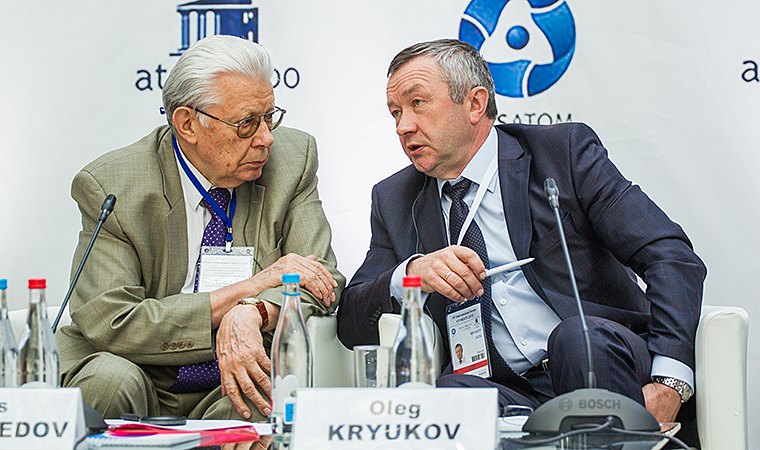
Talking legacy
back to contentsThe Atomexpo International Forum featured a round table discussion on economic efficiency and safety of end-of-cycle solutions for nuclear facilities. Specific attention was paid to radioactive waste management, waste reduction technologies and decommissioning of nuclear facilities.
Opening the discussion, its moderator and member of the Russian Academy of Sciences Boris Myasoedov mentioned the most significant data reflecting the present-day situation in nuclear power. According to IAEA, there are 434 nuclear reactors with a total capacity of 370 GW in the world. 10 other reactors were started in 2013, with about 80 projects in 30 countries (mostly in Asia) currently under construction. 30 other countries are considering an opportunity to develop their peaceful nuclear industry.
IAEA is sure that special attention should be paid to safety issues and broader use of peaceful atom for heating and power generation purposes.
“Globally, there are nearly 40 reactors waiting for the shutdown. About 40% of nuclear stations have been in operation for more than 30 years, and 17% for more than 40 years,” Boris Myasoedov noted. “Nuclear decommissioning is nowadays an acute problem. Humankind has accumulated solid experience in the front end of the nuclear fuel cycle while decommissioning remains new ground for many countries although some of them are doing well in this field.”
Oleg Kryukov, Rosatom Director for Public Policy on Radioactive Waste, Spent Nuclear Fuel and Nuclear Decommissioning, said in his speech that further development of the nuclear industry depended heavily on our ability to find efficient back-end solutions.
The year 2015 is decisive for the back end of the nuclear fuel cycle in Russia. It is the year when the Federal Nuclear Safety Program, which started in 2008, comes to an end. “The Program was developed at the time when the global nuclear industry, including Russia, faced a shortage of spent nuclear fuel containers. Eight years have passed, and the Program achieved its basic goal – no container shortage anymore,” Oleg Kryukov stressed. “The situation is stable. It does not mean, however, that all problems have been solved. We have already developed a concept of another federal program and will soon have it approved. The first program aimed at stabilizing the situation while the second initiative targets improvement. Spent nuclear fuel and radioactive waste should not accumulate anymore. We should build disposal facilities that will help us tackle nuclear legacy. We should demonstrate that nuclear energy is an economically feasible and environment friendly source of power.”
Mr. Kryukov invited everyone to participate in a dedicated conference to be held in November by AtomEco, Rosatom’s fuel back-end management division.




